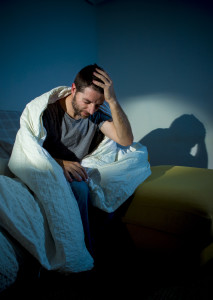 Drug detox is step #1 to recovering from a drug addiction. It’s a relatively short period of intense withdrawal (made easier by medical assistance) following a long bout of drug use. After the addict is stabilized, the body can rid itself of whichever drug they’ve been using, and withdrawal symptoms can be managed.
Drug detox is step #1 to recovering from a drug addiction. It’s a relatively short period of intense withdrawal (made easier by medical assistance) following a long bout of drug use. After the addict is stabilized, the body can rid itself of whichever drug they’ve been using, and withdrawal symptoms can be managed.
The first hours and days of detoxification are intense, no doubt. Medication and medical supervision helps, but the process can be painful nonetheless. Different drugs yield different withdrawal symptoms, some worse than others. Addicts may experience nausea, vomiting, hallucinations, agitation, mood disturbances, sleep disturbances (sleeping far too much or too little), chills, tremors, and, of course, cravings. This, of course, varies from person to person, but generally it depends upon the length of the addiction; the combination of drugs abused; the dose of the drug of choice at the time that the patient enters detox; and any pre-existing mental conditions that the patient might have.
Detox doesn’t mean sobriety, at least not in the long-term; that will require a tremendous amount of psychotherapeutic treatment, which serves to address and correct brain changes associated with the addiction. Follow-up care is essential—not only rehab (inpatient or out), but also prolonged support networks such as 12 step programs, sponsors, or various types of group programs and therapies.
Again, detox is an crucial first step. Getting there isn’t always a voluntary process; in the best case scenario it is. It’s a brave thing to do and a brave thing to tolerate. At rock bottom is the door to recovery. Hopefully, your detox experience will become just a bad memory, the darkest part of a dark past.
If you’ve already been through detox, are seeking long-term treatment, and would like to learn more about our approach here at LEAD Recovery, explore our website or give us a call at 800-380-0012.


